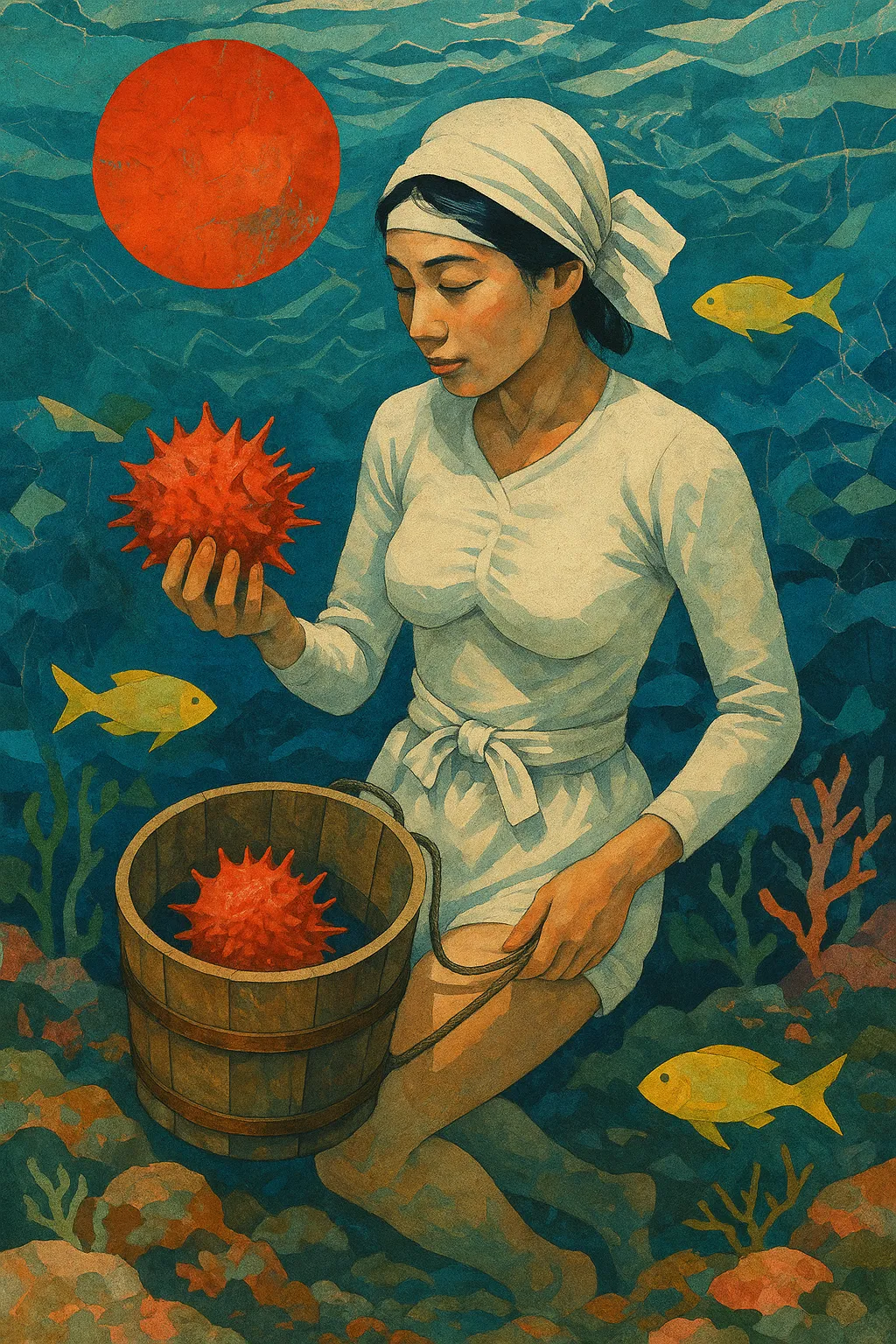
The Haunting Whistle of the Sea | Ama Divers
Before the world stirs, before the mist lifts from the sea, they are already there — bare-legged and quiet on the shore, tying back their hair, whispering to each other in a rhythm older than language. The ocean hasn’t spoken yet, but the Ama are listening.
For more than two thousand years, these women have belonged to the sea. Their names rarely appear in history books, yet their breath and labor have fed villages, supported families, and shaped tradition. They do not need fins or tanks. They carry no armor. Their bodies are honed for water, for silence, for depth. They are the Ama — Japan’s sea women — and they dive not to conquer the ocean, but to live in harmony with it.
The Ama’s roots stretch deep into Japanese history. As early as the eighth century, poetry in the Man’yōshū described women gathering shellfish with wet hair and heavy baskets. Generations learned the sea as one learns a lullaby — by watching mothers and grandmothers slip beneath the waves, by mimicking their whistles, by slowly teaching lungs and bodies to endure the cold.
Their practice has always been austere. No air tanks. No fins. Only a wooden tub bobbing at the surface, tied to them with rope like a patient companion. A sharp stick or iron chisel for prying stubborn shells from rock. Again and again they dive, sometimes fifty times in a morning, pushing to depths of twenty meters or more.
The ocean gives in pieces: abalone gleaming in rocky crevices, turban shells spiraling like temple roofs, slippery sea cucumbers, broad sheets of wakame seaweed. And sometimes, the rarest treasure of all — a red thorny oyster, hiding a pearl. Each dive is a negotiation with nature, each harvest a reminder of how delicate the balance is.
When they surface, it is with the unmistakable sound of the isobue — the sea whistle — a sharp, haunting breath drawn from the depths of the throat. To hear it echo across the waves is to know the Ama are working, living proof of a tradition as enduring as the tide.
But their strength is not only in the water. On shore, the Ama gather in their huts, simple wooden shelters where fires burn against the cold. They eat steaming bowls of miso soup, warm their hands, and share stories. Gossip, laughter, family news — the air hums with a rhythm as essential as the dives themselves. Here, respect is not measured by youth but by endurance. Grandmothers dive alongside granddaughters, their silver hair tied back as tightly as the young. Each generation learns not just the techniques of diving, but the meaning of belonging to a sisterhood.
Today, the Ama are fewer. In the 1970s, there were thousands across Japan’s coasts; now only a couple of thousand remain, most of them in their sixties and seventies. Younger women rarely take up the work, choosing modern jobs instead of cold mornings and uncertain harvests. The sea itself has changed too — warming waters, coral bleaching, and dwindling abalone have made the catch less abundant.
Yet the Ama endure. Along the Ise-Shima coast, in villages like Osatsu, they still slip into the waves, carrying on the craft with quiet pride. Some now open their huts to visitors, sharing meals and demonstrations, offering a glimpse into a life both fragile and extraordinary. Whether in white garments or modern wetsuits, they remain what they have always been: women who meet the sea on its own terms.
Their lives speak of ikigai — a sense of purpose that weaves together necessity, joy, endurance, and belonging. For the Ama, meaning is found in rhythm: the inhale before the dive, the stillness below, the whistle upon surfacing. It is work, but also communion — with the ocean, with one another, with themselves.
Even now, if you stand on the shore at the right hour, you may hear it: a whistle rising thin and fluting across the waves. A song half-remembered, threaded with both effort and grace. The buckets still fill, the fires still burn, the stories are still told.
The Ama are not relics. They are living memory. And as long as that whistle drifts on the wind, their story continues — a reminder that life is richest when it is lived with meaning, with courage, and with joy.